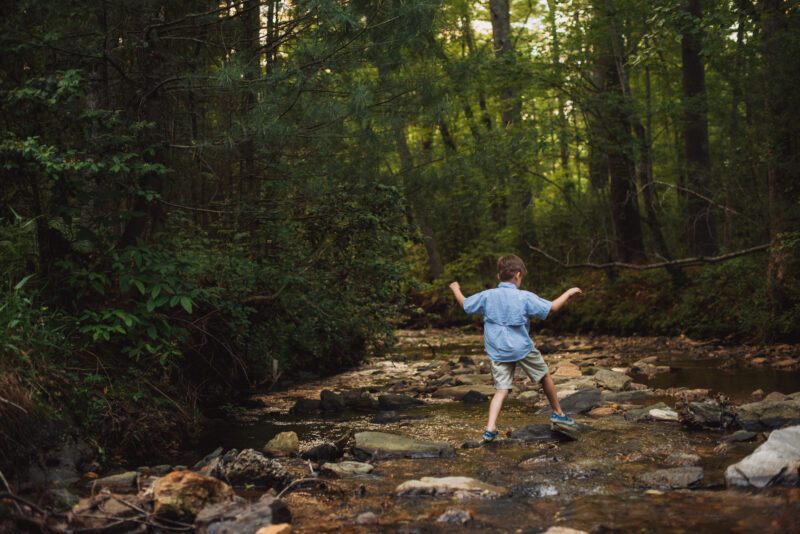
Every tree tells the story of a season, from sun-drenched greens in the summer to the geometry of branches in winter. George Vanderbilt knew this better than anyone, preserving 87,000 acres of land as woodland perseveres, inaugurating the first U.S. forestry school on The Biltmore Estate. The Ramble is part of this legacy, a special forested hideaway tucked in the heart of Asheville. Drawing from the pioneering work of pioneering landscape architect Frederick Law Olmsted, The Ramble, named after the quiet winding strolls in Olmsted’s design of Central Park, is a love letter to the unique ecological environment within the acreage.
Before tenderly transforming into The Ramble, the land was used primarily for hunting and horse trails. Thought and care went into every aspect of the development of this land, from the trees to the watersheds and wetlands. Builders even created a brand-new water system to filter water back into the earth.
Throughout the sprawling getaway, there is a whole world of wildlife, flora, and fauna living and thriving within these 1,000 acres of woodland. Connecting to the famous French Broad River, Dingle Creek is a vibrant stream snaking through The Ramble. Home to native trout and the rare Hellbender, Dingle Creek flits past Buck Spring Cabin and through Bow Bridge, two historic landmarks connecting back to the legacy of George Vanderbilt and Frederick Law Olmsted respectfully. Buck Spring Cabin, once a part of the greater Buck Spring Lodge, has a long legacy to the land. The Lodge built in 1896, atop Mount Pisgah, was a serene hunting lodge for George Vanderbilt. The Cabin was transported to The Ramble and now serves as a gathering place for Ramble residents. Just a few steps away, Bow Bridge gleams against a backdrop of lush trees, curving right above Dingle Creek. Inspired by Central Park’s Bow Bridge, this beautiful piece of architecture is a nod to Frederick Law Olmsted and his groundbreaking landscaping contributions.

Not only found in the quaint spaces and flowing streams, but the roots of preservation are also found in the vast spaces of The Ramble. Inspired once again by Central Park, Longmeadow Park is an open space to share in the beauty of the outdoors. Central Park was conceived as “The Lungs of the City,” a space for city-goers to just breathe, away from the dust and buzz of New York City. Longmeadow Park offers a different serenity, one based on connection. Surrounded by thick forests and beautiful scenery, Longmeadow Park is a place for residents to breathe together, hosting community events, concert series, and simple family picnics. Not only do the parks of The Ramble serve as places of beauty and community, but they also work to build upon the efforts of sustainability the land was founded upon. Crescent Park, with its trickling pond, works as a bio-retention basin to filter stormwater drainage. The water, kept away from natural waterways, also feeds the blooming flora in the surrounding area.
The Ramble has a deep history with the land and the people who shaped the very idea of US preservation and the artistry of landscaping. The Ramble’s perimeter even rests right next to the Blue Ridge Parkway, a triumph of American conservationism, allowing residents to seamlessly hike from the trail system within the Ramble onto the Blue Ridge Parkway itself. George Vanderbilt began a legacy of thoughtful preservation and love of the land which has stretched a hundred years into The Ramble.